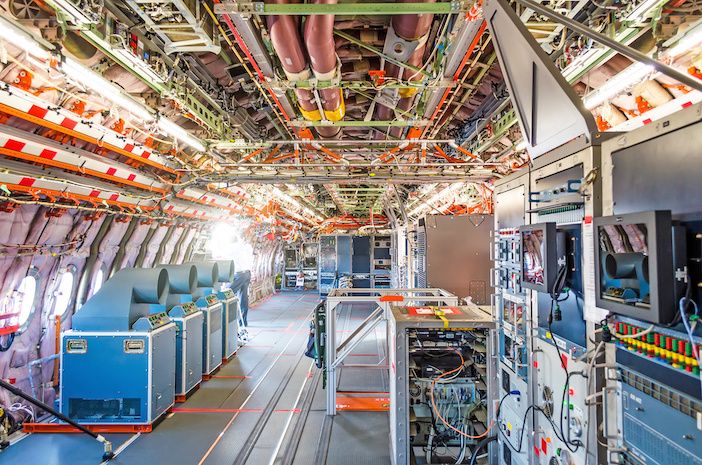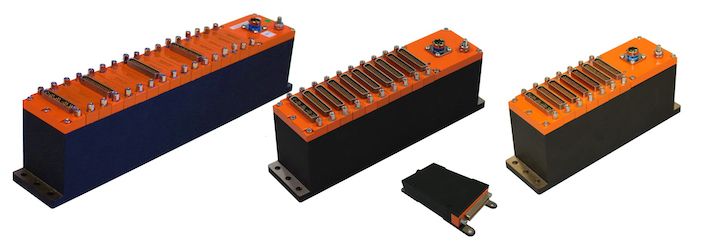The data that flight testing provides to the aerospace industry is a valuable commodity. It is used to develop better and more efficient aircraft and to ensure that once developed, aircraft can be used in a safe and effective manner.
The tools used to acquire, store and transmit flight test data – flight test instrumentation (FTI), data acquisition networks and telemetry – are therefore a vital part of the aerospace sector. These tools require a high level of maturity because they must be reliable and accurate. In addition, flight test engineers face commercial pressures to reduce the certification cycle of aircraft and optimize resources for cost reduction. Innovation in flight therefore often aims to make FTI and data acquisition networks more flexible, easier to install and use and more accurate.
Wireless on the wish list
Within FTI and data acquisition, the use of wireless networks is one of the strongest areas for innovation.
Ghislain Guerrero, business development and innovation director at Safran Data Systems says, “The flight test community has been asking for wireless for at least 10 years. In the beginning it was mainly the big airframers, because of the size of their FTI, but there is now a real call for it across the industry.”
FTI systems are often too heavy, complex in terms of cabling and expensive, contradicting the trend in flight testing and certification to minimize time to market. During the last decade aircraft and rotorcraft manufacturers have strived to reduce the flight test and certification period of development with the use of multiple test aircraft and other techniques.
Guerrero says, “This means FTI has to measure more things in less time. Wireless can help address this challenge because it has flexibility, you can add and remove measurements more easily.
“The community wants to be able to land in the evening after a flight and then the next day take off with a modified FTI because the test engineer wants to see something else. We have to design and develop the tools for the instrumentation engineer to make that possible and wireless is part of the answer.”
ZigBee
Paul Hart, chief technology officer at Curtiss-Wright sees demand for wireless from the flight test community being met already. “There is take up of wireless because it can solve lots of problems,” he says. “For example, wiring a strain gage on a wing tip takes a lot of invasive work. The use of wireless for this type of application is tried and tested, almost routine.”
Curtiss-Wright has done some work with wireless sensors, particularly using ZigBee, which is one of the more widely-used protocols used for wireless FTI. ZigBee has proved useful with rotating machinery like helicopter rotor blades, where circular data acquisition units, essentially accelerometers have been developed and installed on a rotor blade to measure dynamics. “You could use slip rings and commutators for a wired installation, but you’d have to modify the aircraft itself, so wireless is useful for rotors.” says Hart. “You also have to get power to the electronics and that can be fulfilled now by piezoelectric energy harvesting technology.
One of the challenges for applications that use accelerometers such as rotor blades is the high data rate required, around 32 kilosamples per second, he explains. However, Zigbee has a short range and a relatively small bandwidth and so is only useful where data acquisition is required at lower rates. Another potential downside is timing.
“A lot of the networks are Ethernet-based and the data acquisition has to be put into lock step using a switch with a grandmaster clock. Otherwise you can get a skew to the data,” he says.
As a way around this problem, Curtiss-Wright’s latest generation of FTI, the Axon family uses plug-in modules that can be put on extender cables up to 20m long to create what the company calls an “Axonite”. The modules have around a 2in footprint, can be placed in an environmentally sealed enclosure and mounted close to sensors such as accelerometers. The acquisition of data on to an Ethernet bus close to the source minimizes the amount of noise from sources such as electrical cables and switches. “You distribute the data acquisition around the aircraft to overcome the problems of the wiring and electrical noise that is a concern when acquiring an analog signal,” Hart says.
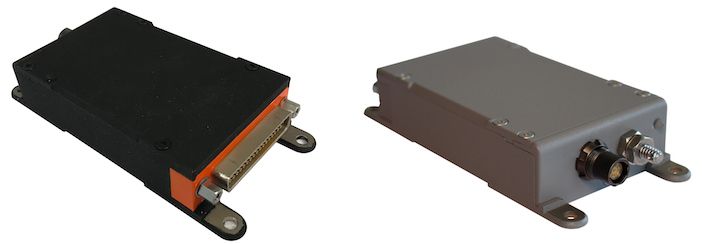
Electromagnetic interference
Guerrero agrees that there are some constraints to the application of current wireless technology in flight test data acquisition networks, such as the relatively poor performance and EMC. “Every aircraft is designed to be a large Faraday cage, because electronics need to be protected. We are asked to make radio communications work within this environment – it’s a big challenge, but we are working with airframers and manufacturers, testing in the field to understand what is possible and not possible, to find the right frequencies and antennas,” he says.
“Today wireless systems bring with them too much compromise, usually in terms of accuracy. We want to eliminate that and deliver fully transparent data, the same as they would get with a wired system.”
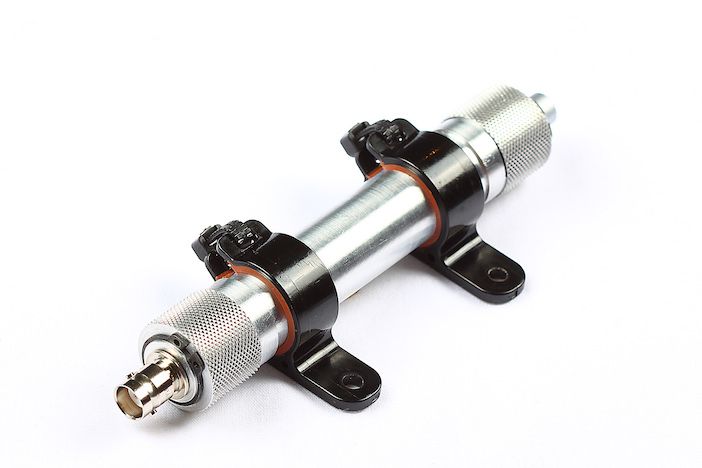
Safran Data Systems aims to facilitate the widespread use of wireless networks in flight testing via three main steps. The first step is the current situation, where most FTI is wired. Step two is the development and the deployment of wireless networks that are capable of replacing any wired connection without any compromise in performance. But, at this stage there are still some drawbacks with wireless networks that mean most FTI is wired – the largest being timing synchronisation. Although as an aside, there may still be situations where a more direct link is possible with wireless than a wired connection and the use of wireless gives better results than wired at this time.
“We can synchronize a remote device to an accuracy of 30 to 50 nanoseconds, better than you can achieve with a wired connection that uses multiple Ethernet links with switches, where you are within 50 to 100 nanoseconds,” says Guerrero.
An example is the acquisition of a high-speed vibration signal from an engine to the aircraft cabin. With a wired system the link has to go from the engine to the pylon then along the wing and into the cabin, with multiple switches and steps causing complexity and cost. If you establish a direct link a “virtual wire” between the cabin and the engine can be directly and more easily established.
The third step is currently being developed in the laboratory. Guerrero says, “We are working towards the goal of a massively wireless FTI architecture. In this step, the backbone of the network would be wireless with the use of wires as the exception, perhaps only where two devices are very close to each other.”

According to Guerrero, the technology to enable this is similar to consumer LTE 5G networks, but adapted to be private without any exterior network operator. LTE networks can manage hundreds of devices on a network with high bandwidth and transfer speeds. He says it is possible to reach step three within five years. “It will be possible in the future to have a massively wireless FTI.
“We want to exploit this technology on frequencies that are available and compliant with the aircraft. The first and most important requirement is to ensure we do not interfere and jam any important systems on the aircraft.”
Electrical challenges
The new materials and systems being used throughout modern aircraft are also a spur for innovation in FTI and data acquisition networks. A corollary of the use of composites in fuselages is an increased interest in the use of fiber-optic sensors, such as the use of Fiber Bragg Grating (FBG) for strain gages, especially in high EMC environments. “FBG strain sensors are more reliable, but the signal conditioning is completely different. They use a technology called interrogators and a different protocol,” says Hart.
There is also an increasing use of electronics and electrical systems in modern aircraft, particularly in areas such as flight controls and hydraulics. FTI is also having to evolve to measure and check electronics and flight control computers. Engines are associated with this, such as the move towards geared turbofans (GTF), which are designed to output electrical power more efficiently and at variable frequencies.
“GTF engines are more efficient but create the need for engineers to test the performance of systems at variable frequencies,” says Hart.
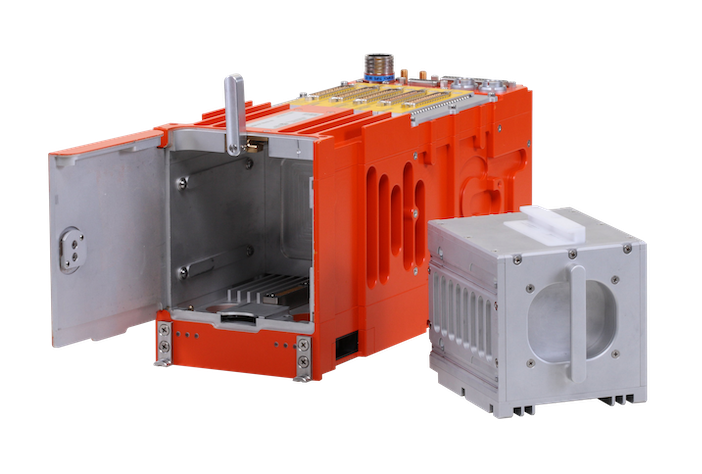
Guerrero agrees that the move to more electric aircraft will have an impact on the instrumentation that is used to monitor aerodynamic and structural aspects of aircraft and that it will become more difficult to accurately monitor the aircraft’s electrical network. However, he doesn’t believe that the higher voltages and currents will cause complications for wireless data acquisition networks – the frequencies are different enough to not affect the network. “More electric aircraft will impact the kind of acquisition that happens more,” he says.
“In the coming months and years the wireless revolution will continue. New solutions will become available to address the pain points in current data acquisition networks and to unleash the capabilities of instrumentation systems, achieving the goals of engineers.”
Flight test data’s main use in modern aerospace may be to validate computer modelling of tweaked iterative aircraft designs, new aeronautical ideas and concepts, but in this role it is no less important than it ever has been.
Inflight medical data transfer
The medical data of patients during an emergency flight is of the utmost importance. Transmitting patient data accurately, reliably and as early as possible to a hospital so it can be analyzed can be the difference between life and death for a patient in critical condition.
Flight data and communications technology company Skytrac and medical transport organization STAT MedEvac earlier this year successfully transferred patient data via inflight cellular and satellite connections on an emergency flight for the first time.
Engineers from Skytrac configured a Zoll X patient monitor / defibrillator with an onboard wifi network enabled by the company’s
DAL-200 wireless data link, enabling the
Zoll X to connect to its own servers to relay the data on to the destination hospital. When cellular connectivity was unavailable, as is the case for most remote emergency medical missions, the DAL-200 redirected the medical data to an ISAT-200A avionics system that encrypted it and sent it through the Iridium satellite network to Skytrac, where it was then forwarded to Zoll’s secure medical servers. This enabled healthcare practitioners to access 12-lead reports before patients arrived in the emergency room.
Dr Leonard Weiss, assistant medical director at STAT MedEvac sees immediate real-world applications. He says, “Transfer of care of critically ill patients is one of the riskiest phases of care, where up to 20% of patients in the USA may experience a harmful event. Current emergency and 911 communication systems are limited, using archaic technology.
“Our work is critical to developing future systems that allow early and robust coordination of care and alert waiting medical and surgical teams of inbound patients.”
Jan van der Heul, vice president of sales at Skytrac Systems said, “We’ve proven that AI and big data aren’t the only ways to revolutionize the healthcare industry and
are excited to introduce this technology to the market.”
This article was originally published in the June print edition of Aerospace Testing International. Read the article in its original format here and register to receive future print and digital issues before everyone else for free here.


